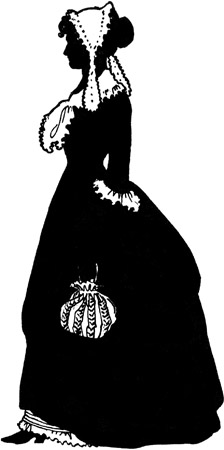胡適名言︰
寧鳴而死,不默而生。
要怎麼收穫,先那麼栽。
為學有如金字塔,要能廣大,要能高。
保守永遠是多數,年輕人只管向前衝。
蘭花草
詞︰胡適 曲︰佚名
我從山中來 帶著蘭花草
種在小園中 希望花開早
一日看三回 看得花時過
蘭花卻依然 苞也無一個
轉眼秋天到 移蘭入暖房
朝朝頻顧惜 夜夜不相忘
期待春花開 能將夙愿償
滿庭花簇簇 添得許多香
當『博大精深』遇上『溫文婉約』是否『輾轉反側』??
─── 摘自《紙張、鉛筆和橡皮擦》
話說那小汽車一時不見蹤影︰
影
影(又稱影子、背影),是一種物理現象,是光線被不透明物體阻檔而產生的黑暗範圍,與光源的方向相反。影的橫切面是二維輪廓 、阻檔光線物體的倒轉投影。影的大小、形狀隨光線的入射角而改變。

Shadows of visitors to the Eiffel Tower, viewed from the first platform
Shadow
A shadow is a dark area where light from a light source is blocked by an opaque object. It occupies all of the three-dimensional volume behind an object with light in front of it. The cross section of a shadow is a two-dimensional silhouette, or a reverse projection of the object blocking the light.
莫非它已進入怎麼收穫該怎麼栽耶?且精通
剪影
剪影(法語:silhouette)是一種將人事物以單色描繪(以黑色為主),凸顯輪廓的藝術圖像,或指剪影藝術本身,可屬一種視覺藝術,剪影被運用在各種方面。

The only known contemporary depiction of Martha Jefferson, wife of Thomas Jefferson.
之術乎??還是它已深明『邏輯排中律』!
圖靈百年之後,『計算』並沒有變得更『簡單』,『爆炸』般的『知識』也沒使得『邏輯』推演更加『清晰』。或許那台『仙女計算機』並沒有『使用手冊』?還是她有使用手冊,祇可惜缺少那個伴隨著通過『圖靈測試』之『演算法』的呢??
拉丁語 tertium non datur 聲稱︰
任何命題 ![]() 必真。
必真。
這個叫做『排中律』的概念,有直覺主意的數學家反對,後來還成立了一個『數學建構主義』的流派。這不就是句『空話』的嗎?又何必需要反對?原因在於並非所有的概念都是可以,像『真假』、『是非』與『對錯』般的『二分』,在『黑白』之外不只有『灰』,甚至還有『色』。所以使用排中律一不小心就可能產生『虛假兩難論證』False dilemma。比方說有人論證想反駁『小三之歌』的『沒有拆不散的家庭,只有不努力的小三』︰
假使愛情堅定,無論如何考驗也不會改變;如果愛情不堅定,沒有小三也難長存。只有愛情堅定才會攜手建立家庭,所以再努力的小三也沒有用。
作者不知『堅不堅定』的兩極之間,果真該不該有『其他愛情』的存在?因此無法判斷這個論證對錯是否如此??而『直覺邏輯者』卻認為應該取消排中律︰
平面上任何一條不自相交連續之『封閉曲線』![]() ,將平面分成『三』個區域,『
,將平面分成『三』個區域,『![]() 之外或
之外或![]() 之內』之『二分』不包含著『
之內』之『二分』不包含著『![]() 之中』,但它不是才是
之中』,但它不是才是 ![]() 的啊!!
的啊!!
,又得到『平行投影』之法呢?
Projection (linear algebra)
In linear algebra and functional analysis, a projection is a linear transformation P from a vector space to itself such that P 2 = P. That is, whenever P is applied twice to any value, it gives the same result as if it were applied once (idempotent). It leaves its image unchanged.[1] Though abstract, this definition of “projection” formalizes and generalizes the idea of graphical projection. One can also consider the effect of a projection on a geometrical object by examining the effect of the projection on points in the object.
Simple example
Orthogonal projection
For example, the function which maps the point (x, y, z) in three-dimensional space R3 to the point (x, y, 0) is an orthogonal projection onto the x–y plane. This function is represented by the matrix
The action of this matrix on an arbitrary vector is
To see that P is indeed a projection, i.e., P = P2, we compute
Oblique projection
A simple example of a non-orthogonal (oblique) projection (for definition see below) is
Via matrix multiplication, one sees that
proving that P is indeed a projection.
The projection P is orthogonal if and only if α = 0.







